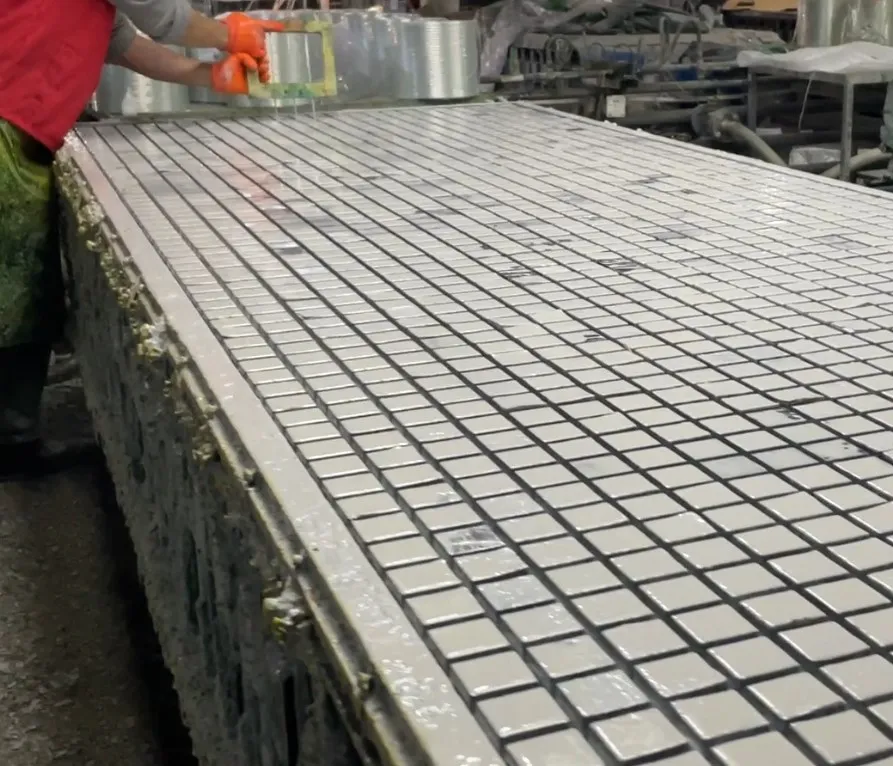loading...
- No. 9, Xingyuan South Street, Dongwaihuan Road, Zaoqiang County, Hengshui, Hebei, China
- admin@zjcomposites.com
- +86 15097380338
- Welcome to visit our website!
Exploring the Properties and Applications of GRP Gratings in Modern Construction
Understanding GRP Gratings Applications and Advantages
GRP (Glass Reinforced Plastic) gratings, also known as fiberglass gratings, are composite materials widely used in various industries due to their exceptional strength, durability, and resistance to corrosive environments. These gratings are made by combining fiberglass with a resin matrix, which results in a lightweight yet exceptionally strong product. With a range of applications across different sectors, GRP gratings have become a preferred choice in modern construction and industrial settings.
Composition and Manufacturing
The manufacturing process of GRP gratings involves the pultrusion method, where continuous strands of glass fibers are drawn through a resin bath and then shaped into gratings under heat and pressure. This process ensures that the glass fibers are evenly distributed, providing maximum strength and stiffness. The final product is highly resistant to environmental factors such as UV rays, chemicals, and moisture, making it suitable for both indoor and outdoor applications.
Key Advantages
One of the primary advantages of GRP gratings is their lightweight nature, which simplifies transportation and installation. Unlike traditional materials like steel or aluminum, GRP gratings are significantly lighter, reducing the stress on structures and allowing for easier handling. This is especially beneficial in applications where weight is a critical consideration.
Another notable feature of GRP gratings is their corrosion resistance. In industries where exposure to harsh chemicals is inevitable—such as wastewater treatment, oil and gas, and chemical processing—standard metal gratings may deteriorate over time. GRP gratings maintain their integrity, ensuring longevity and lower maintenance costs. This characteristic not only prolongs the lifespan of the installations but also contributes to overall safety in the workplace.
grp gratings

Moreover, GRP gratings offer excellent slip resistance, making them an ideal choice for walkways, platforms, and stairways. Their textured surface reduces the risk of slips and falls, enhancing safety in environments where wet or oily conditions may prevail. This feature is particularly valuable in industrial settings and public areas, where accidents can lead to serious injuries.
Applications
The versatile nature of GRP gratings allows for a wide range of applications. In industrial settings, they are commonly used for flooring, walkways, platforms, and even ladders. In the marine industry, GRP gratings are utilized in dockside applications and shipbuilding due to their resistance to saltwater and UV exposure. Additionally, they are frequently employed in electrical installations, where non-conductive properties are essential for safety.
Beyond industrial use, GRP gratings are also becoming popular in architectural applications. They can be designed to fit various aesthetic requirements, providing both functionality and visual appeal in commercial buildings, parks, and public spaces. The option for custom colors and designs further enhances their appeal to architects and designers seeking innovative solutions.
Conclusion
In conclusion, GRP gratings offer a range of advantages that make them an excellent choice for various applications across multiple industries. Their combination of lightweight construction, corrosion resistance, slip resistance, and versatility ensures they meet the demanding needs of modern construction and industrial practices. As technology advances and the demand for durable materials continues to grow, GRP gratings are poised to play an increasingly significant role in shaping safe and efficient environments.
-
Premium FRP Handrail for All ApplicationsNewsAug.29,2025
-
Low Maintenance FRP Mini Mesh Grating ProductsNewsAug.29,2025
-
Innovative FRP Square Tubes for Modern Industrial SolutionsNewsAug.29,2025
-
FRP Water Storage Tanks Wholesale Solutions for Bulk BuyersNewsAug.29,2025
-
FRP Molded Grating Solutions for Diverse Industrial ApplicationsNewsAug.29,2025
-
Construction Advancements Through FRP Pultruded ProfilesNewsAug.29,2025
-
Why Choose FRP Railings, Guardrails, and Handrail Systems?NewsAug.29,2025
